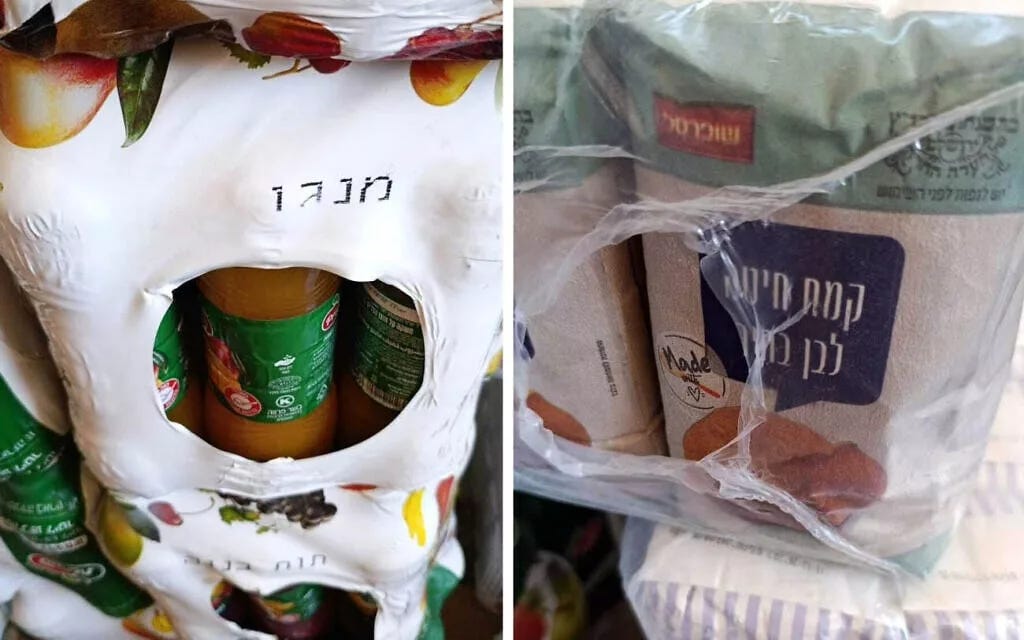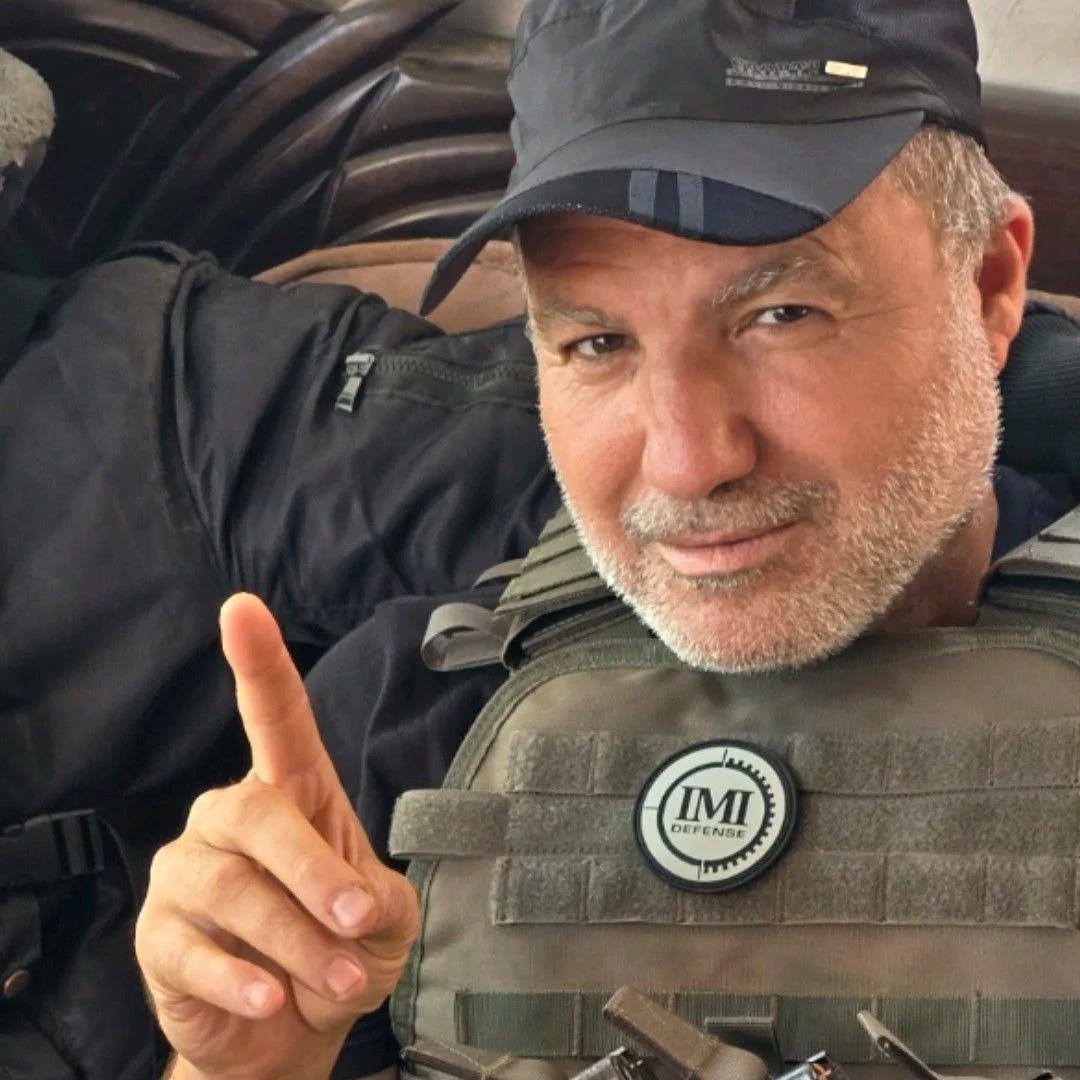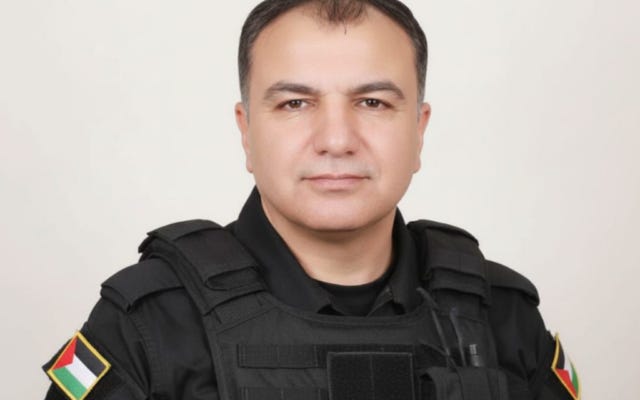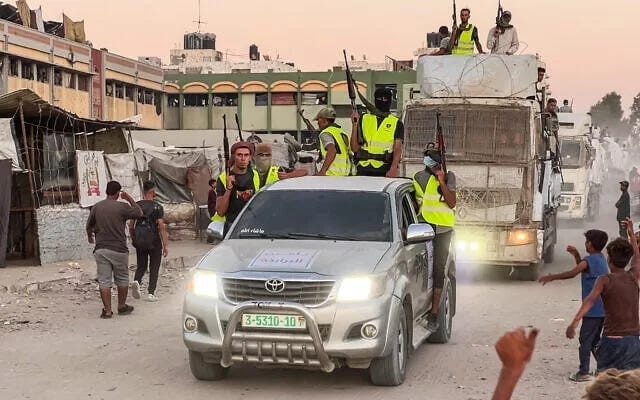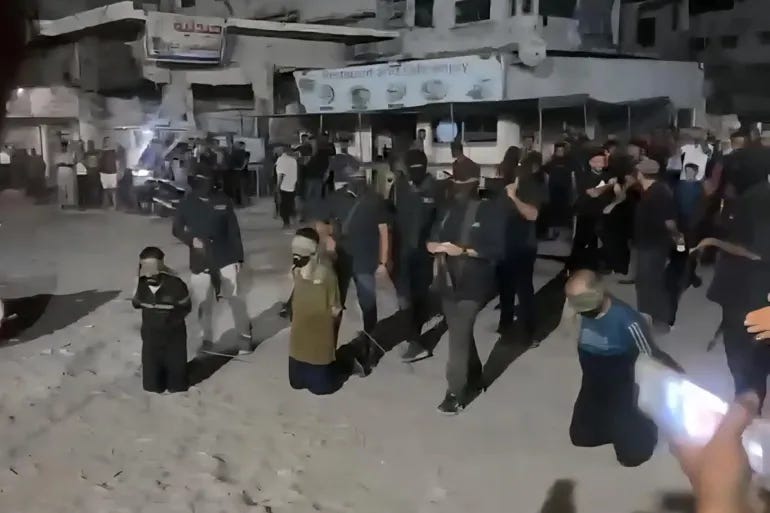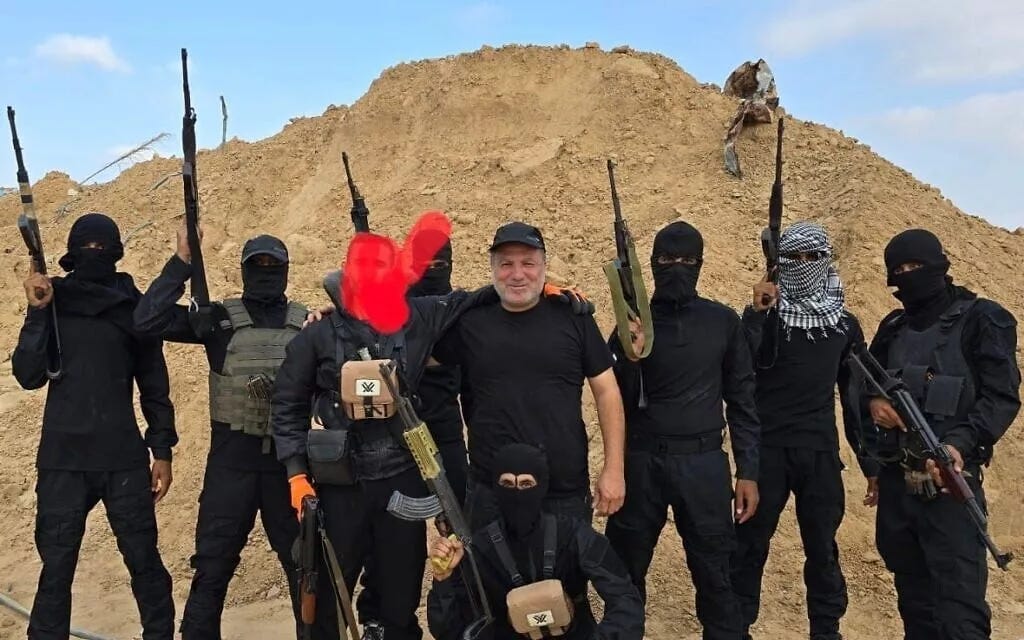
In the midst of Israel’s extermination war on the Gaza Strip, a new phase of control tactics has emerged. Israel’s methods are no longer limited to bombing and ground incursions; they now extend to utilizing local armed militias born from the womb of chaos, siege, and hunger. These groups operate under a veneer of local legitimacy while being directly tied to Israel’s security agencies.
In this context, the name of the former officer of the Palestinian Authority security services, Hossam Al‑Ustul, has surfaced as the latest face that Tel Aviv has pushed to the front in Gaza, as an alternative to Hamas.
However, the man who Israel promotes in Khan Yunis carries a long history of betrayal, collaboration, and a biography full of suspicion, making him a figure of doubt and danger to Gaza’s residents.
His existence reveals an occupation strategy that transforms certain mercenaries and collaborators into “alternative arms” to complement the Israeli army’s actions while granting it a margin of deniability.
A Controversial Biography
The name Hossam Abdul Majid Al‑Ustul, known by the nickname “Abu Sefn,” was not known in Gaza until he suddenly emerged as the leader of a new armed militia called the “Strike Force for Combating Terrorism,” operating against the resistance. Israel openly endorses its existence and coordinates fully with the Israeli General Security Service (Shin Bet)—an experiment that reflects an attempt to fashion a local alternative to Hamas’s rule.
In a scene that reveals deep shifts in the conflict’s trajectory, Al‑Ustul and his group have taken up position in a depopulated area devastated by months of war: the village of Qizan Al‑Najjar, south of Khan Yunis, inside territory controlled by the Israeli army after having been completely evacuated of its population. Similar scenes play out in various towns and areas across the Strip.
Al‑Ustul strongly opposes Hamas and has appeared in video clips vowing to confront them and pursue their members. This makes him appear as a replacement face that Prime Minister Benjamin Netanyahu’s government may support in Khan Yunis, analogous to the Abu Shabab militia, whose name over recent months has become linked to the systematic looting of aid and coordination with occupation soldiers in the field.
In a press interview with Times of Israel, Al‑Ustul claimed the establishment of a “safe zone” that provides food, water, and shelter to those who wish to replace resistance rule. He presented himself as the head of a “new humanitarian zone” under his control, with Israeli protection similar to how Abu Shabab is responsible for areas east of Rafah and parts of eastern Khan Yunis.
At first glance, such scenes might appear as local Palestinian initiatives to relieve nearly two million displaced people suffering from severe shortages in aid and services. But in essence, they expose an Israeli strategy to re‑produce the old colonial “divide and rule” policy where the occupation employs criminals and fringe groups as tools to tear apart Palestinian social fabric, weaken resistance, and create alternative entities.
In his remarks to the Israeli outlet, Al‑Ustul did not deny a connection to Abu Shabab, and in fact confirmed contact and coordination with them. He claimed to operate independently, though their relationship is not merely one of intersecting interests but part of a larger picture in which Israel attempts to sow local agents to carry out security and logistical roles to complement its military operations, including monitoring resistance operatives and limiting their activities.
What is striking in Al‑Ustul’s public discourse and media presence in Israeli media is that he speaks openly of receiving direct support from Israel, showing images of food and military goods bearing Israeli brand labels, and affirming “security coordination” with Tel Aviv. His group’s members carry official permits to bear arms from the Israeli army.
He has also released video clips online showing buildings lit up within a Gaza plunged into darkness—since Israel cut electricity after the October 7, 2023, attack explaining that his group uses solar panels and that they will soon rely on the occupation to ensure electricity and water. This indicates that the occupation permits such initiatives in certain areas to undermine the resistance’s control and create pseudo‑local alternatives.
Al‑Ustul has invited displaced residents from Khan Yunis to move into the area under his control, which he says is preparing to erect more tents to receive hundreds in the coming days. He has also announced security screening for newcomers to prove they are not affiliated with Hamas, thereby converting aid into tools for imposing loyalty. But behind such “humanitarian” rhetoric lies a dangerous political and military project aimed at turning Gaza into a mosaic of zones governed under local facades but under direct Israeli planning.
In interviews, Al‑Ustul did not hesitate to acknowledge that his group is armed, and receives funding from external parties, including the U.S., Europe, and unnamed Arab states—with promises of his protection and military cover from the Israeli army. He thus becomes a front for the occupation’s schemes to create so‑called “safe zones” that rival the resistance’s authority, entrenching a new reality serving projects of displacement and control.
He posted photos on his Facebook page with armed men, stating that their military equipment comes from these Western and Arab actors. He went further, claiming that individuals from those countries are in direct contact with him. In one image, he wore a vest bearing the logo of “Israel Military Industries” (IMI) which produces ammunition used to maim and kill Palestinians and supplies equipment to the Israeli defense ministry and the prime minister’s office.
Al‑Ustul’s declarations about multi‑source support for his militias raise significant questions about a regional and international joint project to reshape Gaza. This narrative reflects an alignment of interests between Israel which seeks to reduce the cost of direct occupation and some international and regional actors aiming to curb Hamas’s influence, even at the expense of turning Gaza into besieged cantons operated by local proxies.
A History of Betrayal and Collaboration
Al‑Ustul is not an unfamiliar face in Gaza. He worked in Israel for many years before joining the Palestinian Authority’s Preventive Security service under Mahmoud Abbas (Abu Mazen), back when PA control over Gaza still held. This background helps explain his intense hostility toward the movement that ousted Ramallah’s rule from Gaza in 2007 Hamas and to which Al‑Ustul and many PA members were opposed.
Over nearly three decades, Al‑Ustul’s name has been linked to pivotal moments in cooperation with Israel’s intelligence agencies from early accusations of espionage in the mid-1990s, to carrying out internal and external missions in favor of Israeli intelligence, to his alleged involvement in the 2018 assassination of the Palestinian scholar and engineer Fadi Al-Batsh in Malaysia.
In 2018, Hamas security forces arrested Al‑Ustul after luring him into Gaza, under internal investigations into Palestinians implicated in Al-Batsh’s targeting. After more than three years in detention, Hamas sentenced him to death on charges of collaborating with Shin Bet and participating in the assassination at the behest of Mossad. He escaped Hamas prisons multiple times, most recently with the outbreak of the latest war on the Strip.
Since his escape, he has moved between several locations, attempted to infiltrate into Israel, but later joined the Abu Shabab militia in Rafah, fighting alongside them against the resistance. He then established a new formation with other armed men some previously accused of collaborating with the occupation or held by Gaza authorities.
Between intelligence revelations and press-sourced testimonies, a biography emerges dense with intelligence ties and clandestine operations among them, his reported involvement in bringing suspicious vehicles from Israel into Gaza to benefit Shin Bet collaborators or to be used later to assassinate faction members.
Thus, Al‑Ustul has evolved from a prisoner accused of serious criminal charges to a militia commander openly protected and supported by the occupation. The man in his fifties, who lost standing in the PA’s security structure, found in cooperation with Israel a new entry point into Gaza’s scene but this time with far greater danger and controversy.
To this day, Al‑Ustul has not abandoned his traditional role as an instrument of the occupation. Leaked materials including images, audio, and video reveal his attempts to lure young men into working for the occupation and Mossad, employing seduction and deception to recruit and implicate them in cooperation against resistance actors. This reflects his continuing engagement in recruiting agents under the guise of betrayal and manipulation.
Old Tools, New Faces
What is happening in Gaza today cannot be reduced to the spectacle of a nascent militia or a tribal leader vying for influence. It is part of a comprehensive Israeli strategy combining military, intelligence, political, and humanitarian dimensions. This strategy seeks to re-produce colonial policies under a local façade seemingly close to society, but in truth a vehicle to weaken and control it.

Israel’s experience is not new. Since the mid‑1970s, it established similar militias in the West Bank known as the “Village Committees.” In the 1980s, it repeated the model in southern Lebanon by supporting the formation of a local militia known as the “South Lebanon Army,” popularly called “Army of Sunday,” which became an extremely radical force beyond previous Village Committee policies.
Today, these experiments are being reproduced in Gaza, and Israeli leaders themselves admit this. Netanyahu, in June, acknowledged arming what he called “Palestinian tribes opposed to Hamas in Gaza,” in an effort to redivide Gaza into tribal zones controlled by clans and families ultimately establishing a local alternative structure via fragmentation of society.
Occupation soldiers interviewed by Haaretz confirmed that recruitment of these militias is accelerating and that they are now part of a deliberate strategy to confront Hamas. Israel recognized at least three groups receiving weapons and funding to carry out military missions, filling security and political voids, and tracking Hamas and Islamic Jihad members.
In addition to formations with young men from some tribes and Hamas opponents including individuals affiliated with Fatah the Abu Shabab militia emerges as the clearest model of this trajectory. It has evolved from a gang looting aid into a field force executing operations directly under the supervision of the occupation army an explicit realization of how organized crime is recycled into a military tool serving the occupation’s goals.
These groups surfaced clearly when the last truce ended and fighting resumed in March. In parts of Gaza, protests and demonstrations broke out, and it was revealed that most of those organizing and leading them were PA elements aiming to return to rule the Strip in cooperation with Israel. Israel uses these as dissent elements that can substitute for Hamas.
According to Israeli media citing military sources, these Tel Aviv-backed militias are not equipped with standard Israeli weapons, but rather with arms seized from Hamas during the war and gear obtained from Hezbollah in southern Lebanon, in a deliberate attempt to present their military tools as “war spoils” with no direct link to Israel.
But the picture becomes clearer when looking at the privileges granted to members of these militias they receive monthly salaries and official permits to carry arms from the Israeli army, effectively turning them into local mercenaries working under a Palestinian veneer while serving the occupation’s agenda.
This strategy has been likened by Israeli journalist Sheldon Kirshner to a reproduction of old failed policies. Changing the façade or tools does not change the fact that this is a tired formula carrying the same errors and chances of failure even if presented today as a different solution suited to current conditions.
The Occupation’s Losing Bet on Militias
Local militias such as those led by Al‑Ustul and his counterparts are no longer a marginal event or a handful of militants in an isolated field. According to a well-crafted Israeli strategy, they have become multifunctional instruments serving interlocking political and security objectives to re-shape Gaza’s geographic and social reality while enabling Israel to avoid presenting a direct on-ground footprint.
Despite differing analyses about Gaza’s future, Israel’s past war-related experiences reveal clear aims behind encouraging local militias: opening an internal front to exhaust resistance, fragmenting the Palestinian social fabric by stoking tribal divides, granting privileges to opportunistic leaders, turning these groups into logistical and intelligence instruments controlling aid and gathering precise information that lowers operational costs.
In the short term, this policy complicates any potential negotiations and paves the way for large-scale forced displacement, by tasking these militias with guarding displaced people and organizing them in what is called the “humanitarian city” south of Rafah a massive detention camp under occupation supervision.
On the ground, the positioning of Al‑Ustul’s militia in the village of Qizan Al‑Najjar on Salah al-Din road between Khan Yunis and Rafah is a strategic choice laden with symbolism. The village lies near the heavily displaced coastal area, making it a “gateway” to the largest forced displacement zone in the south lending Israel a veneer of justification for its policies, while turning the militia into a tool of social and security control.
Meanwhile, the Abu Shabab militia, based in the Shoka area east of Rafah under full Israeli control, was deliberately positioned to become an alternative zone of displacement from the northern evacuated areas, and a distribution hub for aid under supervision of occupation or its proxies.
Despite all these efforts, the occupation’s bet on these formations faces real obstacles. The fates of past militias often end in failure, as Palestinian popular awareness recognizes the danger of “agency” for the occupier. Communities socially isolate such groups, relying on long experience in exposing and confronting collaborators with severity.
Added to that is the strength of social and tribal structure, which deems cooperation with the occupation an indelible stain—making it difficult for alternate leaders to gain legitimacy, and constraining the occupation’s efforts to plant surveillance networks and militias operating amid chaos.
In a sign of this, even Al‑Ustul’s own family just like the Tarabeen tribe did with Yasser Abu Shabab in Gaza has publicly disowned his reprehensible actions, stating his behavior does not reflect their history or values. They affirmed that what he has done is his alone and has brought shame to his family and community.
Meanwhile, the resistance pursues a strict policy of deterrence, exposing collaborators and trying or executing them in field courts. This shows that it can manage “internal security” alongside the “military field,” sending the message that mobilizing local groups to collaborate is a red line that cannot be crossed.
Al‑Ustul was one of five collaborators whose names Hamas recently publicized, warning against dealing or communicating with them, and announcing plans to pursue him—signaling continued control over the security situation and that his fate will not differ from that of collaborators publicly executed in Gaza by the “Sahm” unit specialized in hunting them.
All these factors explain Israel’s failure in turning militias into permanent structures. These militias remain transient tools to carry out “dirty work,” and their leaders quickly find themselves isolated or eliminated at the first serious confrontation with society or resistance—rather than becoming local governing instruments as the occupation plans.
Parallel to the ambiguity surrounding funding mechanisms and the actual role of this militia, Gaza’s inhabitants agree that Al‑Ustul like Abu Shabab is too weak to build a popular base. He remains merely a card in the occupier’s hand, serving its long-term strategy. In their eyes, he is the embodiment of the traitor and collaborator in wartime and that is the most despising stigma.
Even if Al‑Ustul appears to achieve some tactical goals for the occupation, he will remain a marginal detail in its plans. Negotiations will not halt for him; Tel Aviv will not pay an extraordinary price to save or maintain him if he is besieged or captured and even the location where he is entrenched may be abandoned by the occupation.
No one knows where he and his gang will go thereafter. But what is certain is that Israeli military vehicles will not carry them along with soldiers into Palestine just like the “Army of Sunday” was left behind after the walls at night fell. Their fate then is likely to be far worse.


